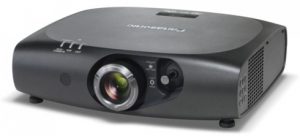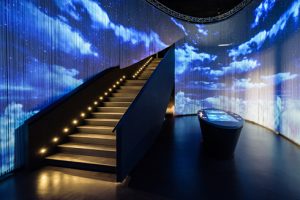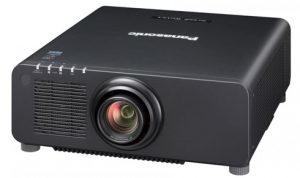The Panasonic’s Solid Shine video projectors with DLP technology shown their full potential in the five rooms of the Lavazza Museum in Turin, where they were used to create fascinating video projections.
In Turin, in the new “Nuvola” complex which covers 30.000 square meters, designed by the Cino Zucchi Architects studio, the Lavazza Museum was inaugurated. It’s a space dedicated to the discovery of Italian coffee and its origins. The museum is divided into five spaces: Casa Lavazza, Fabbrica, Piazza, Atelier and Universe. The rooms have been designed to offer the visitor an immersive and interactive experience.

The visitor has the possibility to personalize the visit. The interactive multimedia installations, in fact, can be activated at will by placing a cup, supplied to visitors, which integrates the passive transmitter with RFID technology, on digital saucers positioned along the entire museum path. Panasonic has structured the video mapping: an interesting interactive installation welcomes visitors already in the first room. It’s a book made of wood that the visitor can browse with a single hand gesture, thanks to the numerous sensors that allow to scroll the contents, recreated thanks to the use of the Panasonic PT-RZ470 laser projector installed inside the ceiling.
In addition to interactivity, video projection is one of the most characteristic aspects of the museum. Several installations have been created using Panasonic’s Solid Shine video projectors and in particular the PT-RZ470, PT-RZ660 (6000 lumens) and PT-RZ770 (7000 lumens). Precisely this model was used for the main projection of the museum inside the Universo room, in which eight PT-RZ770 DLP projectors with wide optics 0.8 ÷ 1: 1 ET-DLE085 were positioned to recreate an immersive multi-projection in Highly scenographic edge blending on an elliptical surface consisting of a wire curtain with a continuously changing radius of curvature.

The choice to create an interactive museum was mainly determined by new trends in the sector. Panasonic projectors have been particularly useful in creating this innovative space. The Solid Shine models, in fact, made it possible to reset the maintenance operations, without compromising the brightness and color quality even after months of use and facilitated the installation operations, as underlined by Gabriele Magagna, owner of Acuson, the System integrator who followed the project: “Being able to have Panasonic laser projectors made our work much easier, because we were able to orient them without positioning constraints.”

A further advantage derives from the Digital Link connection, the proprietary Panasonic’s HDBaseT version, which allows the distribution of audio video and control signals through a single cable. In this way all the museum’s contents are remotely managed, thus allowing third-party events to be hosted in the museum rooms with projections and specially created contents.
www.panasonic.com
A coffee with Panasonic? Sure, at the Lavazza Museum!
You are here:
- Home
- A coffee with Panasonic? Sure,…

